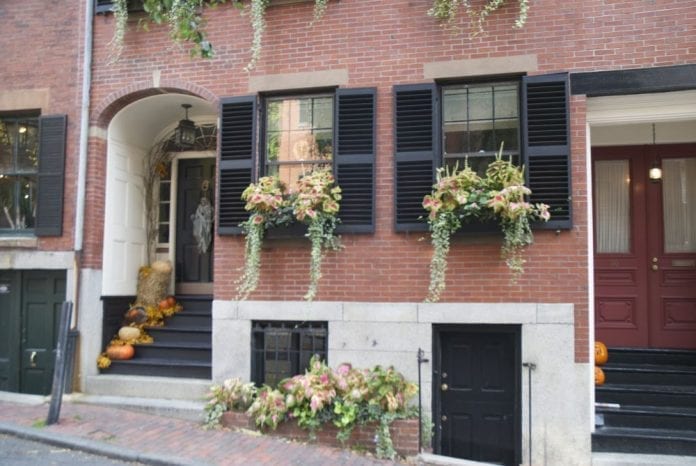Window boxes make a terrific way to bring gardening closer to home, regardless of the season. The possibilities are very nearly endless: spring pansies, summery geraniums, autumn mums, even winter greenery like berries. Window boxes beautify your home, too; they add a splash of color and life to any piece of property. For attractive window boxes all through the year, make use of these simple tips:
Window Box Maintenance
Before you make any planting decisions, you need to confirm that your window box is in good condition. Proper drainage is especially important. Window boxes can rot out if they don’t drain properly. They can even damage your home’s exterior walls. Make a habit of inspecting the condition of your window boxes every year. Repaint and repair them as necessary; the best time to do this is before winter. For boxes that will carry plants directly in soil, the ideal setup is a slanted bottom and a quarter-inch drain opening. Window boxes can be much lighter if you intend to place potted plants in them. Each time you intend to plant in your window boxes, double check their hanging hardware to confirm they are secure. Any repairs or replacements for the hardware should be attended to prior to planting.
Window Box Styles
You should pick your window boxes and the plants that go in them according to the size and style of your home, as well as your personal preferences. Traditional boxes with popular flowers work best on homes with a traditional style, like Cape cottages and New Englanders. If you have a more contemporary home, the best window box choices may be more exotic plantings, like succulents. Keep your home’s exterior colors in mind when you pick out flowers and other plants – you can get some good ideas from Outdoor Art Pros.

Window Box Gardening
Like any garden plot, a window box will receive a fixed amount of sunlight during the growing season. In order to see your plants thrive, you need to match your choices to the amount of sun you expect the window box to get. Very sunny spots call for robust, sun-loving plants like marigolds, geraniums, and succulents. You can cultivate more delicate plants, like begonias and impatiens, in shadier boxes. When it comes to watering, most window box plants obey the same rule of thumb: They grow best when you keep the soil consistently moist (but not muddy). The best times to water are in the early morning or early evening. Note that succulents are a special case; they require far less water than other plants.
Window Box Planting & Spacing
When you’re planting your chosen blooms directly into soil in your window boxes, use clean enriched potting soil. Loosen the plants’ roots before planting. Space plants closely without crowding them. Plants should be separated by at least a few beaches to allow for growth. If you are putting potted plants into your window boxes, check to ensure that none of them are root-bound. If you do find root binding, repot the affected plants in new containers that provide at least two inches of additional room.
Window Box And Seasonal Changes
In early spring, try adding sprigs of curly willow and similar to add height. In full spring and summer, mosses and trailing ivy work well in window boxes. Hay and miniature gourds make lovely accents in the fall. For the winter, try adding evergreen sprigs, pinecones, and seasonal berries.









